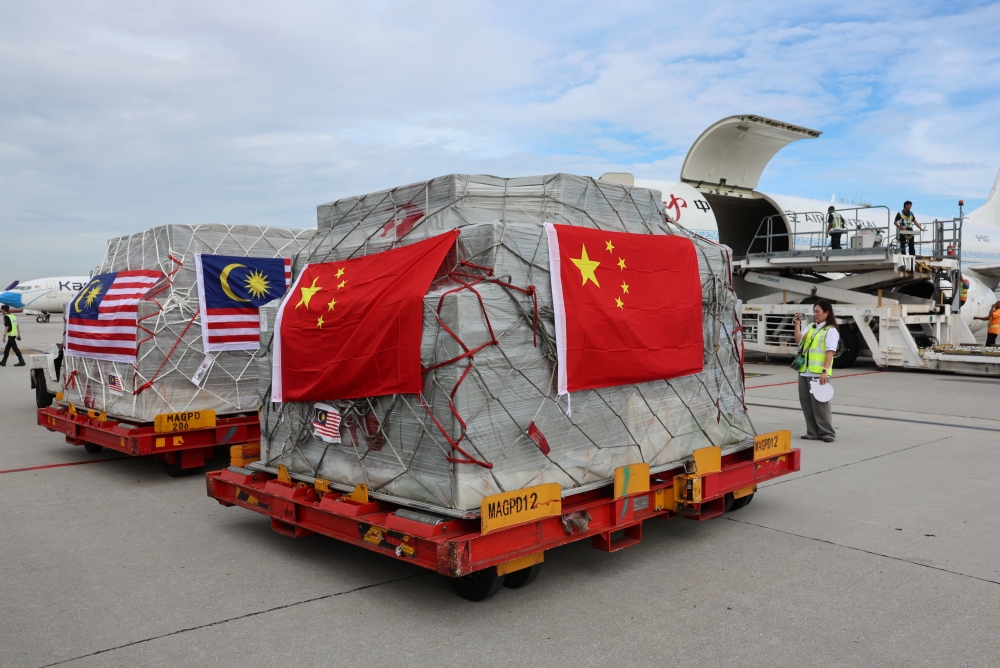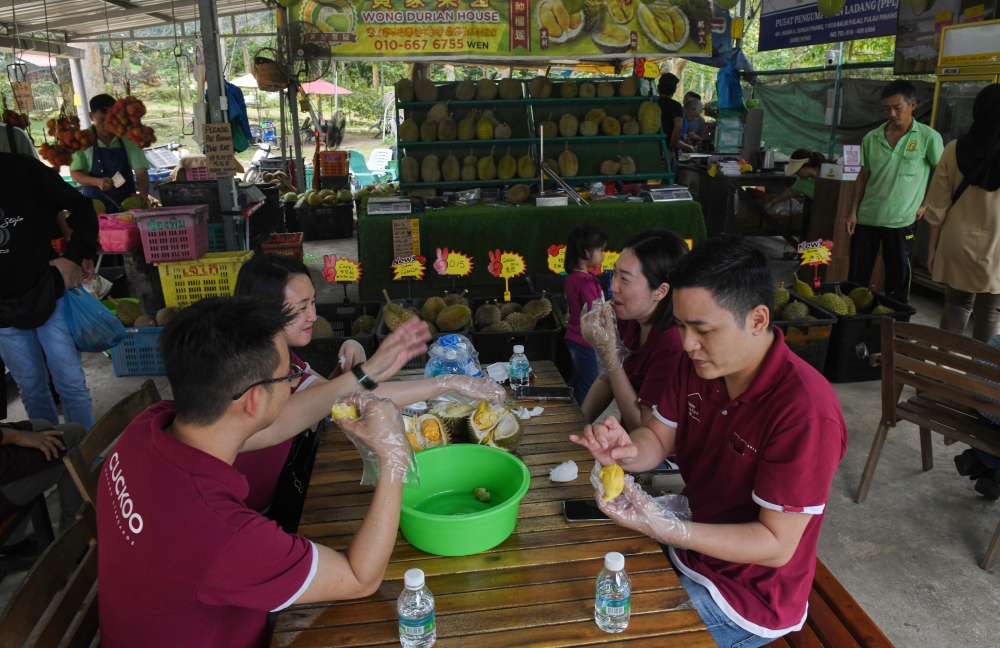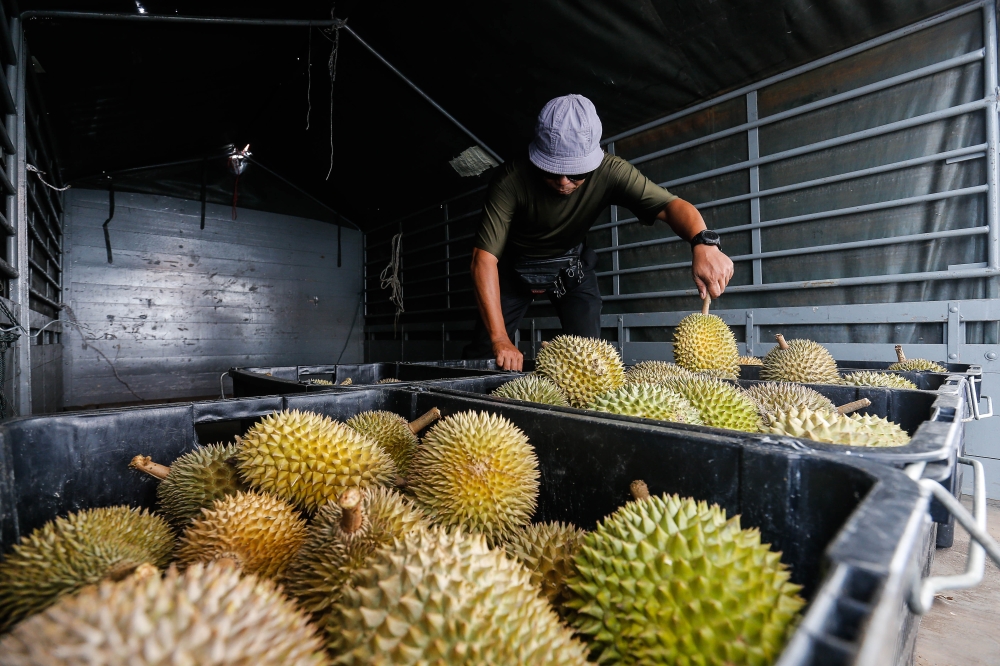- Malaysia’s weather that swings from blazing hot to pouring rain now decide which durians are for overseas markets and which for eating locally.
- Erratic rainfall and heatwaves are reducing yields, damaging fruit quality, and forcing farmers to prioritise exports based on durability and shelf life.
- There is now more durian supply year round, but logistical hurdles still restrict exports while branding and rarity continue to inflate prices of premium varieties like Tupai King.
BEKOK, July 12 — Malaysia’s increasingly topsy‑turvy weather is forcing durian growers to split the “king of fruit” into two camps: hardy varieties robust enough for export and fragile gems that must be eaten quickly at home.
Erratic downpours and bursts of intense heat are shortening shelf life, bruising fruit during transit and rendering cross‑border logistics a high‑stakes gamble, Singapore’s The Straits Times reported farmers in Johor and Penang sharing during a visit to their orchards during the July–August harvest.
“The weather used to be more predictable. We knew when in the year it would rain, but lately, it’s raining all the time. From last year till this year, the rain hasn’t stopped,” Chin Kuan Voon whose orchard is in Bekok, Johor was quoted as saying.
Tough fruit for long hauls, soft flesh for local palates
Chin’s 20‑hectare VS Farms is betting on three sturdier cultivars – Musang King, Black Thorn and newcomer Tupai King – but only the first two are earmarked for Singapore and China.
Their firmer, bittersweet flesh copes better with cold‑chain trucks and day‑long customs queues.

China is one of the top durian importers from Malaysia, but changing weather patterns are limiting what varieties can be shipped out. — Bernama pic
By contrast, Penang’s much‑hyped Tupai King will remain a largely Malaysian indulgence this year.
Penang planter Eric Yeap keeps the variety at home “because the eight‑hour journey from Penang will affect its quality”.
Smaller harvest, sharper triage
Storms have already felled four of Chin’s mature trees, and he expects yields to drop 40 per cent in 2025 — a squeeze likely to push prices 10–15 per cent higher.
With less fruit to sell, deciding which orchard rows feed export orders has become a game of loss minimisation.
Rain also washed away much of last season’s profits.
Chin said Musang King’s thicker skin and lower moisture content let it “survive the vagaries of climate change”.
By contrast, the once‑popular D24 suffers when nights stay warm because the flesh “is very hard. It doesn’t get enough water” as Chin put it, adding that this is not the preference for Malaysian tastebuds.
Bonus January crop — but can it travel?
Swings between scorching days and sudden showers have triggered an off‑season flowering every January.
That means a second, smaller crop — but exporting it is tricky because Chinese New Year demand forces hauliers to stack crates and rush deliveries.
“Because the weather is becoming hotter and hotter, we can harvest durians in January as well,” Chin was quoted as saying.
According to The Straits Times, Singapore wholesalers expect July’s concurrent Johor and Pahang peaks to knock retail prices 20–30 per cent lower, yet admit they will skip Tupai King until supply stabilises.
Branding, not just flavour, fuels price gap
The Penang‑born Tupai King can fetch up to RM200 a kilogramme, triple a good Musang King; but Chin refuses to convert his entire orchard.
“You can’t just sell expensive durians. You need to give people variety,” he told the Singapore newspaper.
Marketers hail it for “bittersweet depth, nutty undertones and subtle fermented notes”, but growers concede the premium stems from scarcity and hype as much as taste.

The erratic weather may be squeezing margins for durian exporters, but for now it is also ensuring that Malaysia’s most fragile, flavour‑packed durians remain a treat best enjoyed on home ground where they drop. — Bernama pic
With the changing climate limiting the crop’s shelf life, Malaysian farmers say their new checklist looks like this:
- Hardier husk, drier flesh — to survive six‑ to eight‑hour road trips and two more days on foreign racks.
- Old‑tree fruit only — older root systems buffer water stress better than young saplings.
- Triage at orchard gate — fruit that softens within 12 hours is routed straight to domestic stalls instead of the export packing house.
- Staggered, smaller cuttings — picking in batches reduces pile‑up at customs during unexpected rain delays.
Climate may be squeezing margins, but for now it is also ensuring that Malaysia’s most fragile, flavour‑packed durians remain a treat best enjoyed where they drop.







